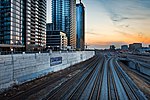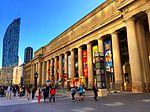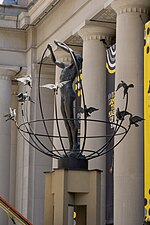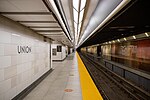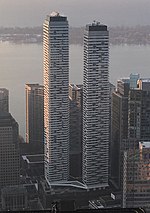South Core, Toronto

South Core is a neighbourhood located in downtown Toronto, Ontario, Canada. The South Core occupies the eastern portions of the Railway Lands. The remodeling and restoration of Union Station and the construction of a new wave of business and condominium towers is central to this area's forecast growth. Forecasters expect the downtown population to grow 80 per cent to 130,000 by 2031. With the financial district just to the north and the new high-rise South Core on the other side, Union is right at the centre. The area has grown rapidly in the last several years. Toronto's Gardiner Expressway is currently being rebuilt to provide a new one-acre park in the area. Two ramps to the expressway at York and Bay streets are being removed to make room for the park.
Excerpt from the Wikipedia article South Core, Toronto (License: CC BY-SA 3.0, Authors, Images).South Core, Toronto
Bay Street, Old Toronto
Geographical coordinates (GPS) Address Phone number Website Nearby Places Show on map
Geographical coordinates (GPS)
| Latitude | Longitude |
|---|---|
| N 43.643888888889 ° | E -79.379444444444 ° |
Address
Scotiabank Arena
Bay Street 40
M5J 2J2 Old Toronto
Ontario, Canada
Open on Google Maps



